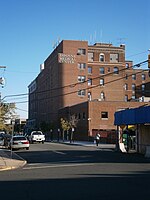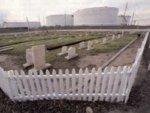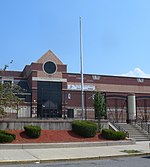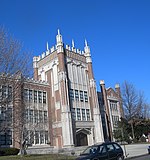22nd Street station (Hudson–Bergen Light Rail)
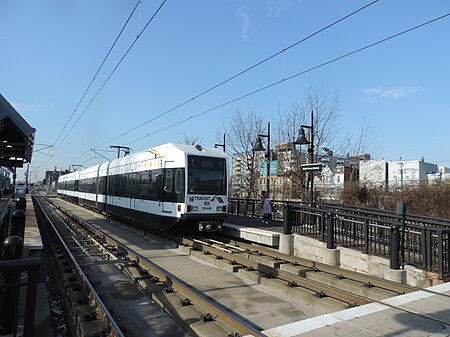
22nd Street is a station on the Hudson–Bergen Light Rail (HBLR) in Bayonne, Hudson County, New Jersey. Located between East 22nd and East 21st Streets in Bayonne, the station is the second of four stops in the city. The station contains two tracks with a set of two side platforms, a difference from the other stations of Bayonne, which all contain island platforms. 22nd Street serves two difference services, the local line between 8th Street in Bayonne and Hoboken Terminal. It also serves the Bayonne Flyer, an express between the four Bayonne stops and Hoboken. The station is handicap accessible with elevators and platform levels that meet the Americans with Disabilities Act of 1990 standards. 22nd Street opened on November 15, 2003 as an extension from 34th Street, serving as the terminal until 8th Street opened on January 31, 2011.
Excerpt from the Wikipedia article 22nd Street station (Hudson–Bergen Light Rail) (License: CC BY-SA 3.0, Authors, Images).22nd Street station (Hudson–Bergen Light Rail)
Prospect Avenue,
Geographical coordinates (GPS) Address Nearby Places Show on map
Geographical coordinates (GPS)
| Latitude | Longitude |
|---|---|
| N 40.661 ° | E -74.116 ° |
Address
Prospect Avenue 25
07002
New Jersey, United States
Open on Google Maps



